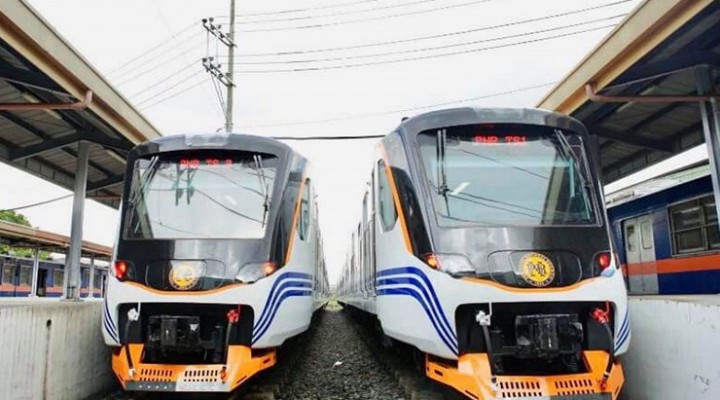China to Build First Phase of New Philippine Railway

Chinese companies have secured a major contract to begin building the first phase of a new inter-city railway across the Philippine island of Luzon. The railway will connect the capital city, Manila, to cities and ports across the island.
China’s Xinhua in an article titled, “Chinese contractors to build Philippines’ fastest, longest railway: ambassador,” would report:
The Philippine government has signed a commercial contract worth 2.8 billion US dollars with Chinese contractors to build the “fastest and longest railway” in the country that connects southern Luzon provinces.
The article also reported:
The first 380 km stretch of the PNR Bicol project, spanning Calamba town in Laguna province to Legazpi town in Albay province, is one of the flagship projects under the Build, Build, Build program launched by Philippine President Rodrigo Duterte to promote infrastructure development in the Southeast Asian country.
It is estimated that the project will cut up to 8 hours off of current journeys and serve up to nearly 15 million travelers annually. Passenger trains will travel up to 160 kph while freight trains will run at approximately 100 kph.
Chinese Building versus US Blustering
The infrastructure project represents a major leap forward in relations between China and the Philippines. China already constitutes the Philippines’ largest trade partner making up nearly 21% of all Philippine exports and accounting for up to 31% of all imports.
The project also helps illustrate how detached from reality Washington’s policy across the Indo-Pacific region is – one in which the US continues attempting to recruit the region’s nations into a unified front against China. Rather than improve American competitiveness in trade or offering alternatives to Chinese-built infrastructure projects, the US has focused on generating animosity between China and its partners by cultivating anti-China opposition groups, militarizing various points of tension in the region, and the selling of copious amounts of weapons.
The Diplomat in a mid-2021 article titled, “US Clears F-16 Sale to Philippines as South China Sea Tensions Brew,” would claim:
The U.S State Department last week cleared billions of dollars in potential arms sales to the Philippines, the latest indication that Washington is ready to back its treaty ally against Chinese aggression in the South China Sea.
The proposed deal includes the transfer of 12 F-16 Block 70/72 fighter jets, along with Sidewinder air-to-air and Harpoon anti-ship missiles. The Philippines has been seeking multirole fighters to help bolster its presence in the contested South China Sea.
Bolstering the Philippine presence in the South China Sea and receiving “backing” from Washington against “Chinese aggression” emerges from a narrative that stands in stark contrast to a China that serves as the Philippines’ largest trade partner who will now be building an extensive modern railway stretching out from the Philippine capital.
The Philippines, like many nations across Southeast Asia, seeks to balance its relations between East and West, enjoying access to markets worldwide. Siding with either the US or China decisively in any sort of regional confrontation remains strictly out of the question for governments pursuing their nations’ best interests.
Much of the disputes the Philippines or any other claimant in the South China Sea have with China, are also had with each other as well. These disputes, while heated at times or leveraged as political distractions amid domestic politics, are minor and easily remedied through bilateral talks.
Yet the Diplomat would claim:
The United States sees the Philippines as crucial to combating Chinese aggression in the South China Sea. Duterte, however, has been heavily criticized for taking a stance seen as too soft on China.
A report last week by the USintelligence firm Simularity said more than 100 additional ships were spotted in the exclusive economic zone (EEZ) of the Philippines in the South China Sea. These were “likely Chinese ships,” the report said.
The US seeks to insert itself into these disputes and escalate them into a regional or even global flashpoint, much in the same way the US has done in Eastern Europe.
Just as the US does regarding “security concerns” in Europe, the US is intent on having Manila interpret minor disputes in the South China Sea as instead, “major threats” and “aggression,” all to help justify Washington’s growing desire to militarize the region toward encircling and containing China.
Rather than engage in bilateral talks with Beijing, Washington would have Manila turn to the United States and “international” mechanisms the US can use to single out and isolate China on the global stage.
The likelihood of the Philippines jeopardizing its economic prosperity owed to its close and growing ties with China over claims in the South China Sea are extremely remote as long as Philippine leadership can prevent the levers of power from being seized by US-sponsored opposition groups and their corresponding political parties.
Upcoming elections offer the United States another opportunity to put into power political circles that will represent and pursue Washington’s interests at the cost of the Philippines. It is clear that provocations will be sought in such a scenario to serve as an excuse to cancel the rail project and leave the Philippines without modern infrastructure and instead with US missiles pointed at Manila’s largest trade partner, China.
China has already demonstrated in recent years that cooperation between itself and nations throughout the region can be mutually beneficial and spur development denied to the region by generations of first European and then American domination. This upcoming rail project represents the potential future that awaits both the Philippines and the region amid growing ties with China. Conversely, the US has left three nations in the region covered in unexploded ordnance, serving as an enduring reminder of what uncontested US influence over the region has to offer.
https://journal-neo.org/2022/03/01/china-to-build-first-phase-of-new-philippine-railway/
 TheAltWorld
TheAltWorld 
0 thoughts on “China to Build First Phase of New Philippine Railway”